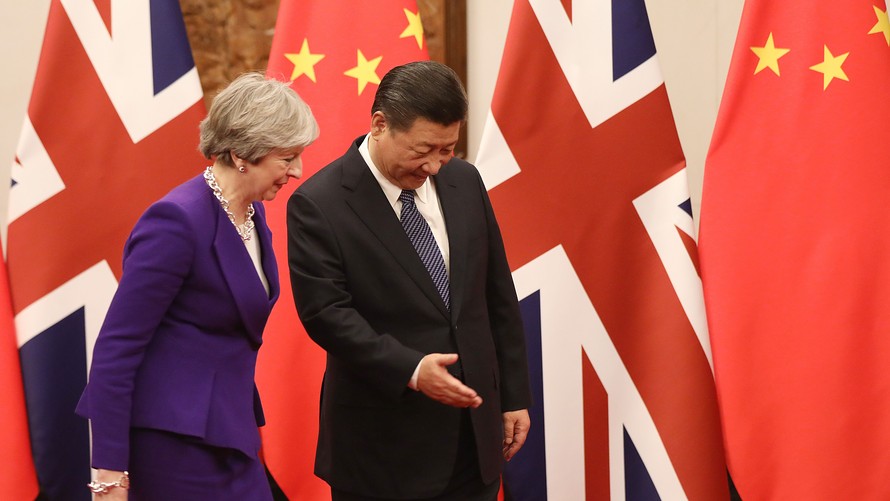
Is it too early to starting talking about March?
Traders and strategists are already bracing for a month that could prove crucial in resolving a pair of the most pressing geopolitical dilemmas of the past several months: Brexit and U.S.-China trade.
“It’s a pivotal month from a geopolitical standpoint,” Randy Frederick, vice president of trading and derivatives at Charles Schwab, told MarketWatch during a phone interview.
Looming large is a 12:01 a.m. Eastern Time March 2 deadline for an agreement to be struck between Beijing and Washington on their longstanding tariff dispute. The U.K., meanwhile, is spiraling toward a March 29 scheduled exit from the European Union with or without a trade agreement in hand.
Recent developments have cast more concerns over how both events will play out, raising the potential that the market reaction could be violent.
On Thursday, President Donald Trump seemed to reject entreaties to meet Chinese President Xi Jinping to cement an agreement before the March deadline, when a 90-day truce ends and duties on some $200 billion in Chinese goods are expected to climb to 25% from 10% currently.
U.S. Trade Representative Robert Lighthizer and Treasury Secretary Steven Mnuchin are heading to Beijing in the coming days to talk with their counterparts.
However, White House National Economic Council Director Larry Kudlow said in a Fox Business interview on Thursday that a “pretty sizable distance” remains between the parties.
Even if tariffs on China goods remain at 10%, as some have reported, the lingering uncertainty around a trade resolution would only highlight that a 12-month long negotiation between the world’s largest economies has failed to yield an accord. That is likely to further unsettle investors and U.S. corporations alike.
The lack of a deal could create greater headwinds for major corporations that have paused business investments and expansions amid the nagging tariff uncertainty. Even a partial pact, without the types of structural reforms on intellectual property rights that have been sought, might be sufficient to help offer some clarity, market participants said.
“Trade for sure has affected the global economy more, and a lot of corporations and economic decisions have been postponed until we know what the lay of the land is,” Arthur Hogan, chief market strategist at National Securities, told MarketWatch.
“We’re going to see sideways action until we start to have those catalysts resolved in March,” he speculated, adding that a partial agreement was most likely.
Indeed, the protracted Sino-American trade battle has contributed to increasing signs of sluggish economic expansion outside of the U.S., which rattled markets during the end of the week.
“Some thoughts on the “trade war.”—I’ve never seen such hand wringing from Wall Street types,” wrote independent market analyst Stephen Todd, in a Friday research note.
Meanwhile, a Brexit deal appears no closer than before. Without an agreement dictating its relationship with the EU, the U.K. would crash out of the trade bloc, possibly exacerbating brewing economic problems in Europe that could spill over to the sensitive U.S. markets.
All that uncertainty is running in the background of the stock market, traders and strategists said. “There’s so many ways that Brexit can go. Just some clarity would help the market to know how to position, position globally,” said Jon Dekker, equity sales trader at R.W. Baird & Co.
Friday’s late rally
A late-Friday surge left the Dow Jones Industrial Average DJIA, -0.25% down just 63 points, after earlier falling more than 285 points, but the index, along with the Nasdaq Composite Index COMP, +0.14% still extended a weekly gain to a seventh straight week.
Major U.S. stock benchmarks have jumped since a Dec. 24 low, with the Dow surging 16.5% since that Christmas Eve low, the S&P 500 index SPX, +0.07% rising 16.2% over the same period and the Nasdaq leaping 19.1%, according to FactSet data.
The earnings outlooks is souring
However, much of the stock market’s work could be undone, especially amid uncertainties emanating from company earnings. Some 66.2%, or about two-thirds of S&P 500 constituents, have reported quarterly results, according to FactSet data. Of those, 71.5% reported above analyst expectations for earnings per share, while 21.6% reported below analyst expectations for EPS, according to data provider Refinitiv. Those figures are better than the historical average of 64% of firms topping analysts estimates and 21% coming in weaker than expected, going back to 1994, but the recent numbers are below an average of 78% beating and 15% missing estimates over the past four quarters.
Moreover, the guidance for the first quarter of 2019 has turned negative. EPS for the quarter are now expected to be negative 0.1%.
What’s the key data in the new week?
The consumer-price index and core CPI on Tuesday may be the key data point for a Federal Reserve that has pronounced itself more accommodative and data dependent and attuned to inflation. The market is pricing in zero rate increases in 2019 after Fed Chairman Jerome Powell’s about-face last month.
The rate of consumer inflation in the 12 months ended in December slipped to 1.9% from a seven-year high of 2.9% at the beginning of last summer. It could fall below 1.5% in January.
























